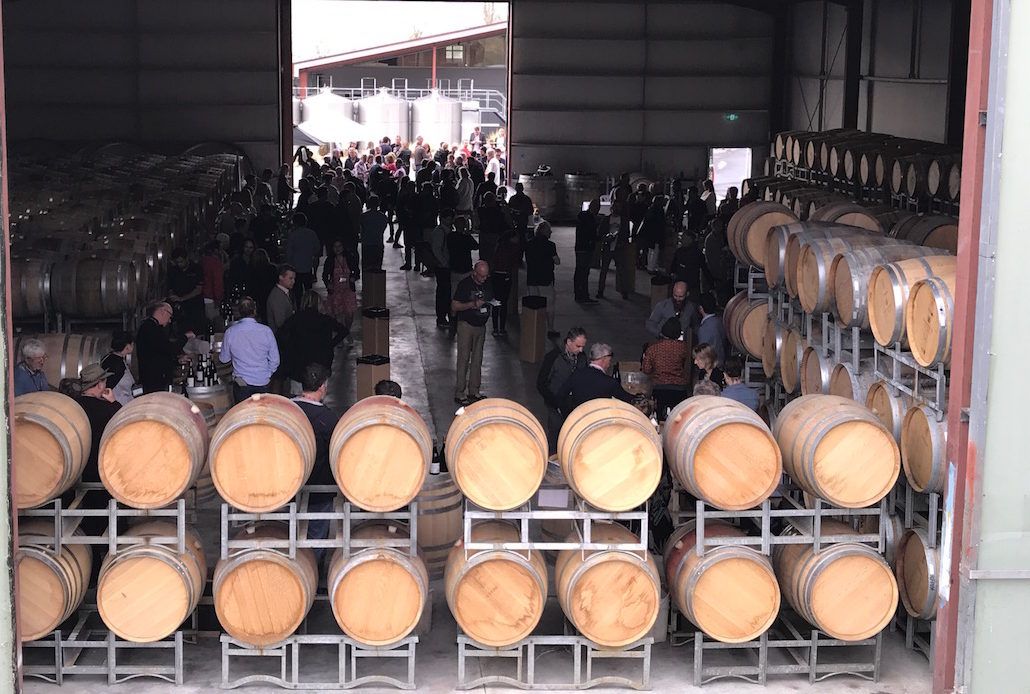First generation wine producers have successfully pursued better balance in their wines in recent years, while a new generation of winemakers taking the reins in Central are proving how far the envelope can be pushed – both with Pinot and with more ‘experimental’ varieties.
Central Otago, the wine region at the base of New Zealand’s South Island, is already one of the hardest places in the world to grow grapes successfully. It is a fragmented region with a consistently harsh climate and climate change is already amplifying inherent problems here; vineyard land is being built on and sold; there’s been a spate of incoming corporate buy-outs and land prices are escalating. These are just some of the pressures being brought to bear on New Zealand’s third largest wine-producing region.
Winemaking on a knife’s edge – how will climate change affect Central?
One of the first things to understand about Central Otago is just how challenging it is to grow grapes here in any sort of consistent fashion.
Growing grapes in Central Otago is agriculture on a knife edge, let alone growing Pinot Nor, notoriously the most fickly of varieties. And yet incredibly the two go together as well as Marlborough and Sauvignon Blanc, Pinot here has terrific purity and complexity.
Central is bizarrely the hottest, coldest, highest and driest region in New Zealand, where even on an overcast day the sun burns your forehead as if you were in Cyprus.
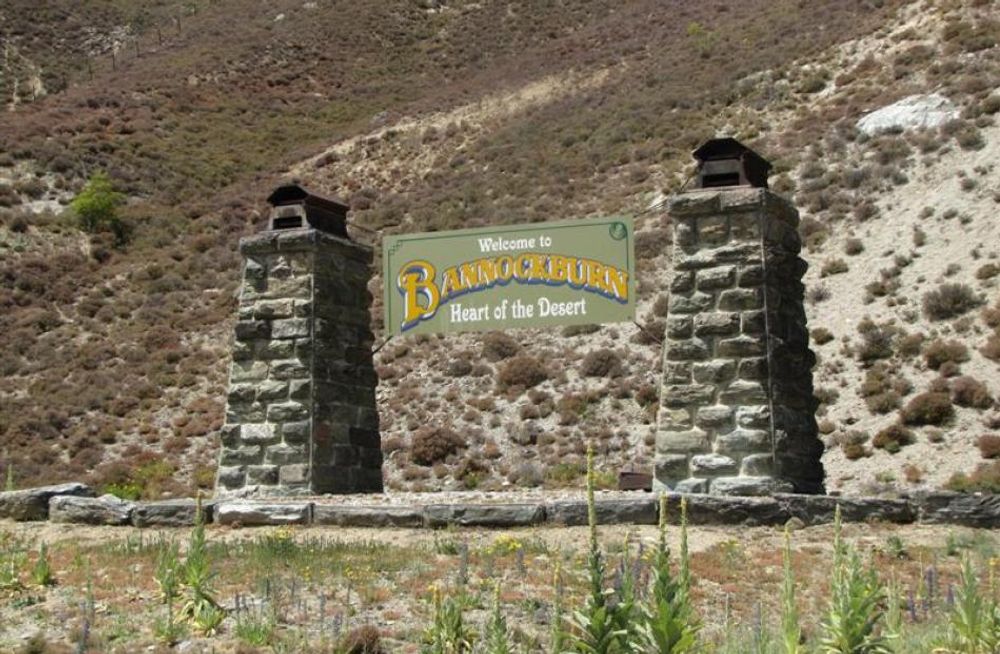
Bannockburn is at the heart of the desert in Central Otago
One of Otago’s six sub-regions, Bannockburn, that is home to the likes of Felton Road and Two Paddocks is quite literally a desert, the wineries surrounded by scorched hills covered in the gorse first planted by Chinese gold-panners who grew it for the berries as a way of countering scurvy.
As you drive down the precipitous valley that leads from the coldest sub-region Gibbston to Bannockburn, you can still see the remains of their crude dwellings by the roaring river. When the Chinese arrived in the mid-Nineteenth century there were no trees here so that quite apart from digging for gold all day they also had to dig for coal to keep themselves warm. This is the world’s most Southern wine region – too cold for the Maori who soon scooted back up North.
There is still a scattering of Maori influence here and there but mostly Central winery names reflect the harsh terrain encountered by the white settlers – Mount Difficulty, Burn Cottage, Prophet’s Rock, Wild Earth, Rockburn and its cuvée Devil’s Staircase.
The original name for Doubtful Sound, one of nearby Fiordland’s biggest tourist attractions was Doubtful Harbour, named as such by James Cook because he knew he could get his boat into the ominous fiord but not sure the prevailing winds from Antartica would ever let him out.
If you’ve been in a plane landing in Central’s ‘capital’ Queenstown you won’t be surprised to hear that pilots need to be at a higher proficiency level. The day I arrived to check out the state of wine in Central, primarily looking at Pinot, there was “the mother of all Southerlies” blowing (not what you want to hear your pilot say) a wind that almost took the lives of five tourists watching boats on the lake, hit the same day by a giant felled willow tree. Welcome to Mordor.
Collateral damage by wind has been a major factor in their summer of 2019, the council still struggling to cope with the clearing up of trees. In Nelson, at the most Northerly tip of the South island the wind fanned terrifying fires.
The second day I was there it snowed (summer remember) as well as sheeted with rain and I mean sheeted. Not for nothing Kiwi songwriter Neil Finn penned ‘Four Seasons In One Day’.

Four seasons in one day: Central Otago is a region of almost unbelievable beauty
The weather has always been tough here and how much of that is now climate change is open to debate – clearly everyone naturally has an eye on it and their own views. But for the country as a whole 2018 was the warmest on record, January 2018 was the warmest-ever followed by the wettest-ever February.
Irregularities in the weather cycle bring issues as in any wine growing region (frost which is always a consideration, dropped leaves in 2016 making photosynthesis and ripening more difficult) but when you are already in a region that is already very harsh, it requires all the skill of the winemaker to cope successfully.
Climate change may well play into Central Otago’s favour, however. In a Bloomberg report, Sarah Heller MW is quoted as saying that New Zealand vineyards represent a good investment for small scale US offshore investors with $1m to spare.
“New Zealand is still expected to offer options when climate change is forecast to hit established wine areas in other parts of the world, such as California and Australia. They are likely to see their winegrowing regions unable to cope with hotter temperatures and more severe weather, growers will have to find cooler areas that have the right soil.”
With climate change bringing such irregularities in weather patterns time will tell whether this will play into Central Otago’s favour or not.
Winemakers here are starting to emphasise sub-regionality in Central Otago (the brilliant four Valli Pinots made by veteran Grant Taylor show the distinction between the sub-regions in one tasting) but for the meantime, most of the winemakers here stress the vintage’s weather over which sub-region the wine is from.
Incoming corporates and rising land prices
“Is Central Otago selling out? That’s the question.”
I was talking to Peter Newport, the editor of local news channel Crux, who had worked in the 1970s with pioneer wine producer Alan Brady, when he first declared his intention to plant vines in Gibbston Valley.

A current advert for an award-winning winery for sale in Central Otago
Land and grapes have always been expensive in Central Otago, so much so that when the Global Financial Crisis hit in 2008 many smaller operations hit the wall. After the boom of the early Noughties, Central Otago then entered a period of consolidation and development which it is arguably still in, with a resurgence in buy-out activity in recent years. Northburn Station sold to LVMH-owned Cloudy Bay in 2014, Mount Difficulty most recently to US-based Foley Family Wines for a cool £27m and Lowburn Ferry Wines to Aotearoa New Zealand Fine Wine Estates last year.
New Zealand has long attracted foreign investors such as Constellation Brands from the US which owns Kim Crawford, Nobilo and Selaks, Treasury Wine Estates from Australia which owns Matua and Shingle Peak and Pernod Ricard that owns Brancott Estate, Stoneleigh and Church Road. But it is the recent activity that is generating a climate of threat or opportunity, depending upon which side of the fence you sit – large-scale investment is a good thing on the one hand in that the corporates are in it for the long haul, although not so good if they use their scale to undercut on price or short-change on quality.
You don’t have to look far to see plenty of other smaller scale activity going on. Where Foley waited a year for approval from the Overseas Investment Office, a green light is far easier to get for sites five hectares and under.
“Deadline Sale!” runs the headline for a current advert of an award-winning Central vineyard near Gibbston. “All the hard work has been done!”
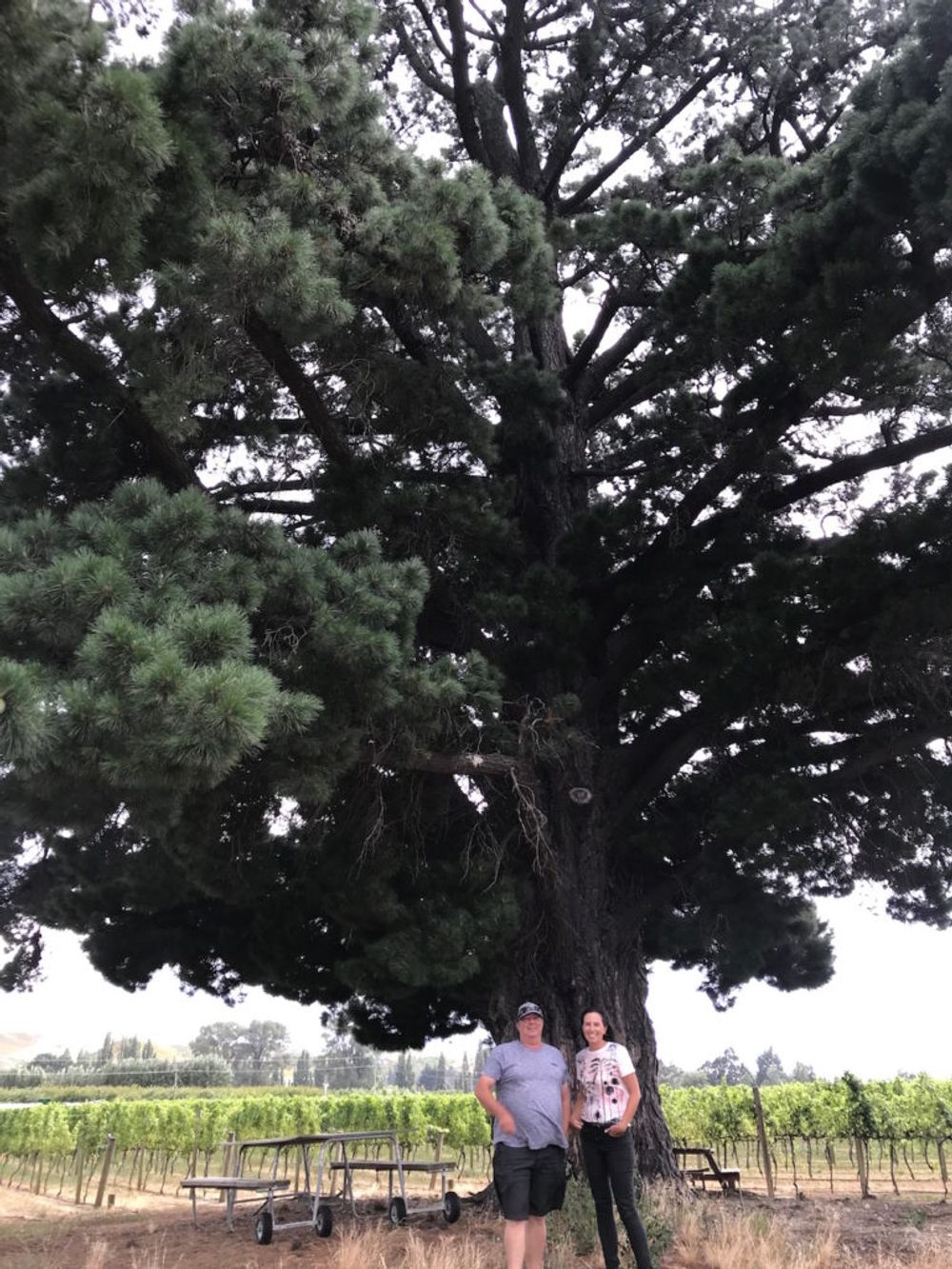
Steve and Michelle from The Wooing Tree under the tree that gives the winery its name.
Further down the valley Wooing Tree has sold some of its prime vineyards in Cromwell to property developers – linked as it is to the ‘second goldrush’ hitting Queenstown a short drive away. Since 2002 when direct flights from Auckland started to this popular outbound sport destination, tourism has gone ballistic, helping to push property prices up meteorically, squeezing residents out and into Cromwell which is currently New Zealand’s fastest growing town.
Part of Wooing Tree’s rationale is to build a wine tourism hotel that will link up with its neighbours and a proposed cycle route from Queenstown to Cromwell.
Given that there is little land left to plant vines in Central Otago, the idea of mature vines being pulled to make way for housing has its critics, although the winemaking neighbours I talked to were more than generous. “I don’t blame him selling,” said one.
Changes afoot in the style of the wines
One thing that is unequivocal, however, is that the wines from Central Otago seem to be getting better. Wines of New Zealand author Rebecca Gibb refers to this as “Mature vines, mature winemakers” – commercial planting on any scale only started just over 30 years ago so there could be a lot of truth in this.
A tasting of 2017 Pinots at the Pinot Noir Celebration this January, showed how this vintage is shaping up to be one of the best if not the best vintages ever. The phenolics are so seductive and, drunk young, the wines have a rustic charm but with all the structure in place to age well, it seems the region as a whole has made changes to the way it is making wine – dialling down the often over-concentrated fruit core of the past to achieve better balance in the wines.
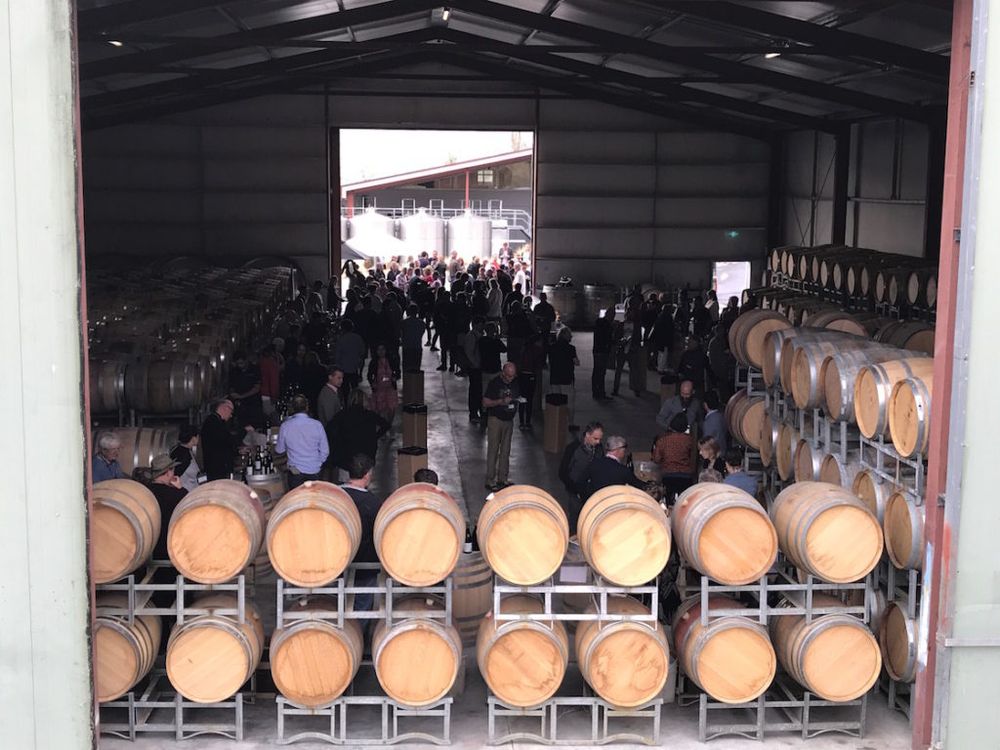
2017 Pinots tasting very well at the Pinot Celebrations: collectively the region has seemingly changed its style
Similar to how Californian winemakers have adapted to changing fashion and forced changes in the style of is Chardonnays, so the Pinot producers of Central Otago are bringing greater focus and definition to their wines without losing their seductive charm.
The movement here is away from punching down, use of extraction, over-use of oak; whole bunch is on the rise, with winemakers minimising their sulphur regime. There are changes in the field too – biodynamic advocates, organic farming, almost every winemaker I spoke to, is rigorously implementing change to further their own sustainability. The region has a crackle of excitement that you can taste in the wines.
Central Otago and California are both aided in these changes by the freedom with which the winemakers can operate under, unfettered as they are by the constraints of, say, Old World DOC and AOC regulations. Incidentally, this was one of the key learnings taken back to the Côte d’Or and Côtes de Nuits by young interns in a formal winemaking exchange programme run for many years between Central Otago and Burgundy. The French couldn’t believe how much freedom the Kiwis have.
At other tastings during the week I got to try a whole raft of exciting new wines using Chardonnay, Sauvignon Blanc, aromatics. The wines coming out of Burn Cottage and Carrick to name just two producers are as exciting, contemporary and well made as you like.
Diversification is all well and good and great news for wine lovers/ buyers so long as it doesn’t get in the way of the longer term goals of the wine region, namely that if you want discerning drinkers internationally to trade up and pay more for Central Otago Pinot, they need to understand the characteristics of the region and its sub-regions – and that means not over-cluttering the message of where the best Pinot comes from in Central Otago and why.
Put simply – why a bottle of Mud House from Accolade’s Bendigo vineyard will cost you £12 and why a bottle of Mount Difficulty’s Bannockburn vineyard will cost £26.
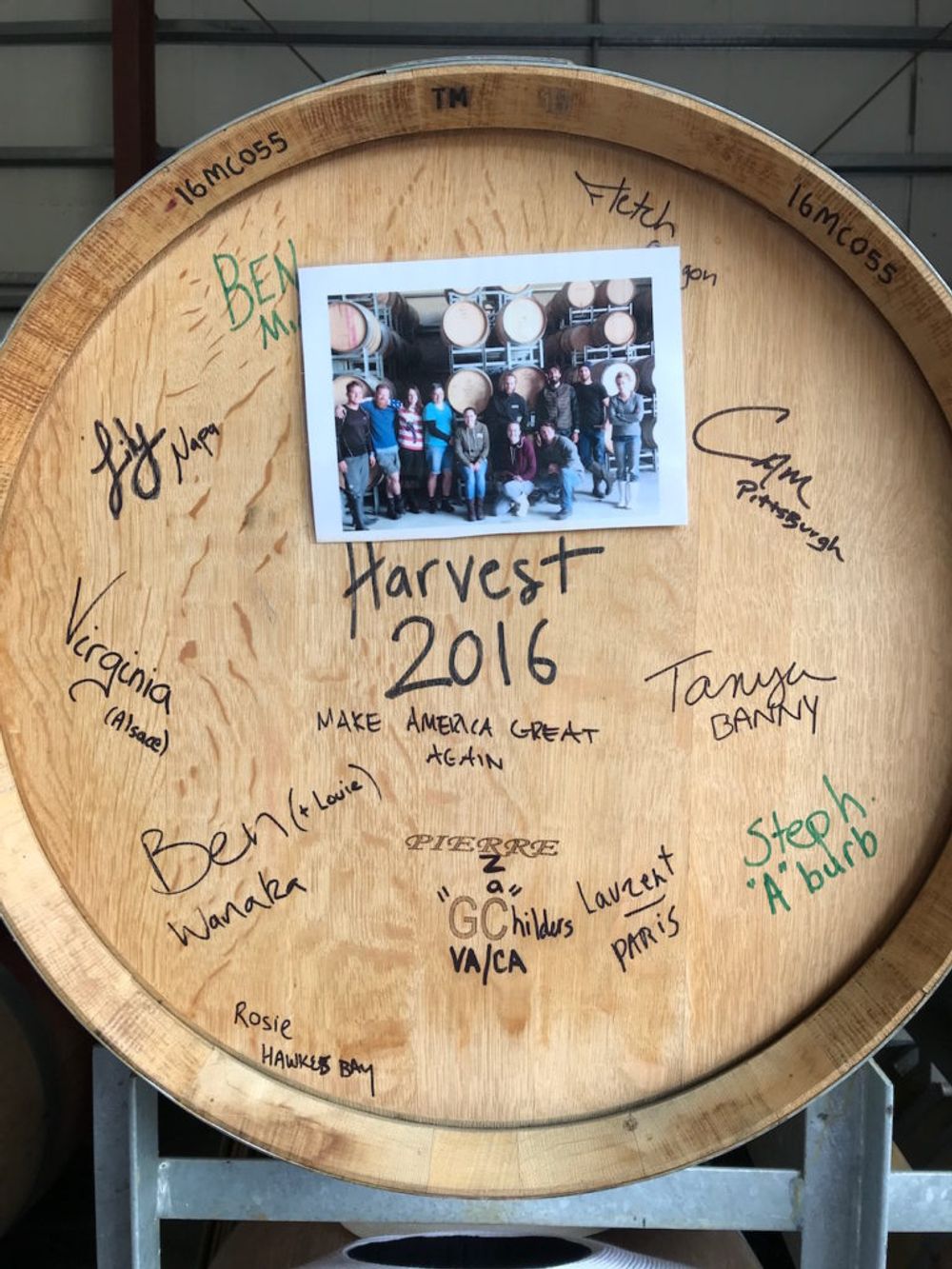
The collegiate atmosphere amongst the winemakers and the region is palpable – and everywhere you look
In conclusion
Despite the sheer amount of change affecting Central Otago, one comes away with an overriding sense of respect and optimism for these “great wines made by good people” as Burgundy expert Jasper Morris summed them up. The remote and harsh location has fostered a strong sense of community, mutual support and loyalty amongst the winemakers that was evident throughout my stay – and bodes well for how it manages hurdles in the future.
Most of all, the wines – particularly the Pinot – have never tasted so good.
